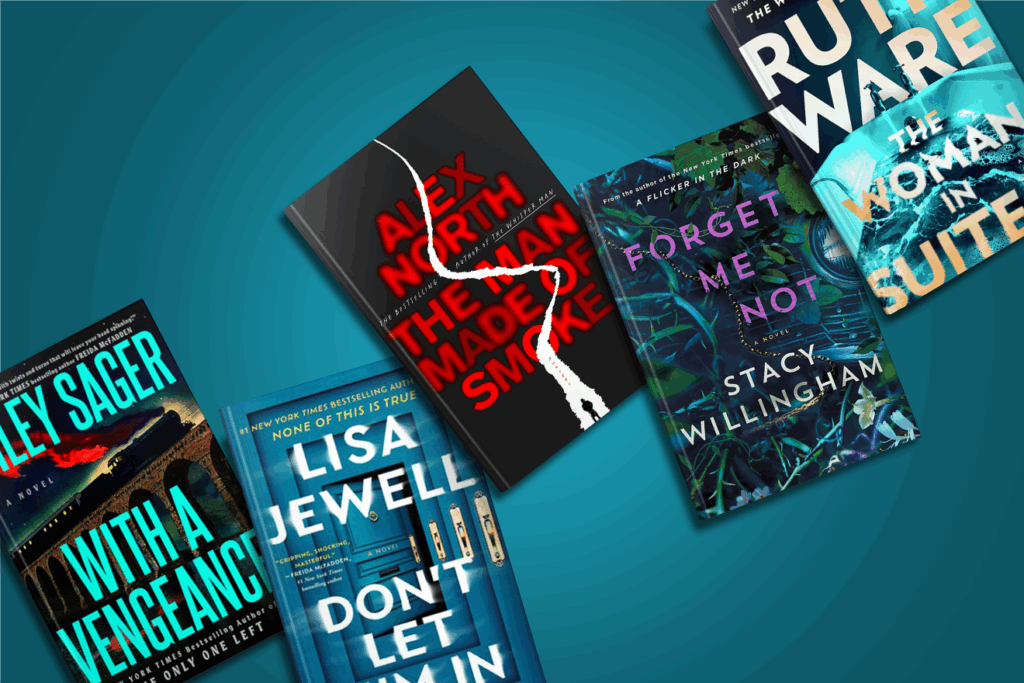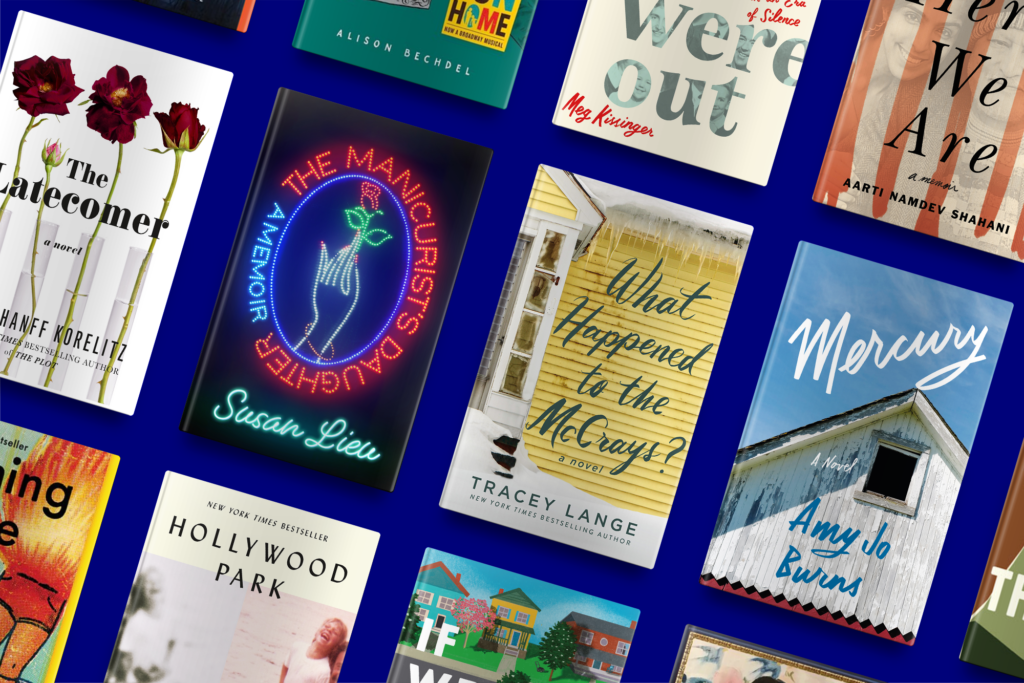If you ever find yourself daydreaming about time travel, the impending zombie apocalypse, or what the year 3439 might look like, then you’re probably a fan of speculative fiction. But what distinguishes speculative fiction from the genres of science fiction and fantasy? Speculative fiction is one of the trickier genres to define, so we’re here to take you on a journey through its history up to where it stands today.
Defining “Speculative Fiction”
Perhaps the only constant in endeavoring to define “speculative fiction” is that no one can agree on precisely what the term means! Indeed, literature professor Marek Oziewicz notes that the discussion over how to define speculative fiction is often more enlightening than the definition itself. Often called a “super genre,”speculative fiction can encompass any narrative — from sci-fi and fantasy to superhero stories and fairy tales — that diverges from “mimetic fiction,” or true-to-life storytelling set in our world that doesn’t bend reality or break the laws of physics.
The key to speculative fiction is speculation, or imagining what would happen if… As The New York Times recently wrote in its review of Alexis Schaitkin’s Elsewhere, “one of the many advantages of writing in the speculative realm is the opportunity to clear the decks of societal expectations.” In other words, speculative fiction asks the question What if? What if you could live forever but were cursed to be forgotten by everyone you met (The Invisible Life of Addie LaRue by V.E. Schwab)? What if you fell in love with an android programmed to serve you and your family (The Mad Scientist’s Daughter by Cassandra Rose Clarke)? What if you joined up with an animal rights organization and were tasked with protecting massive dinosaur-like creatures in an alternate dimension (The Kaiju Preservation Society by John Scalzi)?
This “what if?” approach allows authors to examine earthly themes of love, loss, family, and morality through a fresh and fantastical lens. For instance, in Elsewhere, which has earned comparisons to Margaret Atwood’s influential speculative fiction narrative The Handmaid’s Tale, Alexis Schaitkin explores the challenges of motherhood by setting her novel in a mysterious mountain village high in the clouds where girls become wives and mothers but some mothers simply vanish into the mist. Through her speculative “what if?” twist, Schaitkin vividly confronts the joys and the struggles of motherhood, struggles that society regularly downplays or ignores — self-doubt, loneliness, judgment, the loss of bodily autonomy, and the creeping sense of becoming invisible.
The Origin of Speculative Fiction
While the stellar narratives we might categorize as speculative fiction stretch back through the decades, the emergence of “speculative fiction” as a literary term is relatively recent. Most scholars agree that science fiction writer Robert Heinlein helped popularize the phrase in his 1947 essay “On the Writing of Speculative Fiction,” which he wrote in response to the literary trends of the day. By the mid–20th century, the popularity of science fiction and fantasy was on the rise, thanks in part to faster, cheaper printing techniques that allowed for mass publication of books and magazines that featured sci-fi, horror, and fantasy stories. This spread of so-called “pulp fiction,” however, was a double-edged sword: Some critics argued that such genre narratives were cheap and lowbrow, and should not be taken seriously as literature. Authors like Heinlein sought out a new genre language to describe their novels and short stories and to assert the merit of their work. Heinlein himself used the phrase “speculative fiction” to differentiate his writing from the sensationalist sci-fi he saw in pulp magazines and the futuristic “gadget story” stylings of hard sci-fi.
Margaret Atwood also began using “speculative fiction” to more accurately define her dystopian novels, from The Handmaid’s Tale and Oryx and Crake to The Year of the Flood. She viewed science fiction as a genre in which “things happen that are not possible today.” Her speculative fiction, by contrast, contains all-too-familiar reflections of humanity, detailing dark machinations that are happening now or could easily happen tomorrow. Hugo Award–winning author Ursula K. Le Guin pushed back on Atwood’s assertion in a 2009 article for The Guardian, though, sparking a bit of a literary stir over precisely what “speculative fiction” means. In any case, if we follow Heinlein’s and Atwood’s lead, speculative fiction covers fantastical narratives that nevertheless contain some amount of believability, whether it’s Jules Verne’s adventure classic Twenty Thousand Leagues Under the Sea, popular dystopian fiction like Fahrenheit 451 by Ray Bradbury, or more recent post-apocalyptic literature like Station Eleven by Emily St. John Mandel or The Road by Cormac McCarthy.
Needless to say, plenty of critics, authors, and readers disagree with this definition of speculative fiction, arguing that it’s too restrictive, misunderstands the limitless appeal of the genre, and is, for lack of a better word, snobbish. Almost in protest, some authors, especially writers like Ursula K. Le Guin and Doris Lessing, started using “speculative fiction” to refer to all types of sci-fi narratives. Some publishers even use the term interchangeably with “science fiction” to describe the works they publish.
Today, speculative fiction encompasses a dazzling array of nonmimetic genres, from sci-fi and fantasy to magical realism, dystopian fiction, and horror. The super genre has also gained traction among authors and publishers who seek to highlight the stories of historically marginalized communities. Following in the footsteps of authors like Octavia Butler, who throughout her career explored the experiences of the disenfranchised through speculative fiction narratives, present-day authors such as N.K. Jemisin, Charlie Jane Anders, and Colson Whitehead use speculative fiction to examine themes of gender, race, class, and ability; to question long-held beliefs; to amplify neglected voices; and to envision brighter and better worlds.
Types of Speculative Fiction
Subgenres are always slippery, and “speculative fiction” is even more so. Below is just a sampling of the many subgenres and literary worlds that exist within the speculative fiction universe. Remember, speculative fiction is a super genre — it contains multitudes and multiverses!
Science Fiction and Fantasy
Science fiction and fantasy are intimately linked to speculative fiction; indeed, as we’ve seen above, speculative fiction often serves as a (somewhat contentious) synonym for sci-fi. Generally, sci-fi imagines scenarios within the realms of technology, biology, physics, ecology, genetics, and chemistry. Common sci-fi tropes include space travel, time travel, mad scientists, and artificial intelligence. Fantasy, on the other hand, imagines beings and worlds beyond anything recognizable within our own reality and is often inspired by fairy tales, myths, and legends. Common tropes include mystical realms, fantastical creatures, and ethereal beings with supernatural powers. Sometimes, however, the distinctions between sci-fi and fantasy blur. A prime example is the Star Wars franchise: The space opera narrative contains elements of both sci-fi (space travel, beings from other planets, highly advanced technology) and fantasy (epic quests, royal bloodlines, and a mysterious supernatural “force” that can be harnessed for good or evil).
Magical Realism
Magical realism is a literary movement that originated among Latin American writers and reached a worldwide audience in the 1940s and ’50s. Magical realist authors set their stories in recognizable worlds but add a dash of magic or fantasy. The magic tends to go unexplained or unremarked upon, infusing each narrative with the intoxicating potential that anything could happen (again, what if…). The genre grew in popularity in colonized regions of Latin America and served as a force through which writers could confront Western imperialism and the harsh realities of colonization and exploitation. The most famous example is One Hundred Years of Solitude by Gabriel García Márquez, a multigenerational tale that traces the rise and fall of the Buendía family and the mythical town of Macondo. Another beloved example is Like Water for Chocolate by Laura Esquivel, whose main character channels her emotions into her cooking as the Mexican Revolution intensifies around her.
Afrofuturism
While Afrofuturism is most commonly associated with science fiction, it also intersects with ancient myth, alternative history, superhero fantasy, and other speculative fiction–adjacent categories. The term emerged in the 1990s to refer to speculative fiction narratives that combine the stories, themes, and aesthetics of the African diaspora with technoculture. Authors commonly associated with the movement are N.K. Jemisin, Colson Whitehead, and Nalo Hopkinson. A few popular examples of Afrofuturism include Children of Blood and Bone by Tomi Adeyemi, Ta-Nehisi Coates’s acclaimed five-year run of the Black Panther (Marvel) comic book series, and Nalo Hopkinson’s story collection Skin Folk, which won the 2022 World Fantasy Award for Best Story Collection.
Dystopian
This subgenre imagines a world where things are not going well. Dystopian fiction spans time and space, from classic futuristic narratives like George Orwell’s Nineteen Eighty-Four and Anthony Burgess’s A Clockwork Orange to blockbuster contemporary book series like Lois Lowry’s Giver Quartet, James Dashner’s Maze Runner books, and The Hunger Games trilogy bySuzanne Collins. These novels often deliver a warning about the dire consequences of income inequality, unchecked climate change, and human rights abuses. Feminist dystopian fiction, which has experienced a surge in popularity in recent years, grapples with the erosion of women’s rights in society. Atwood’s The Handmaid’s Tale is a foundational example. Books like The Handmaid’s Tale include Red Clocks by Leni Zumas and Future Home of the Living God by Louise Erdrich.
Cyberpunk
This subgenre emerged from the New Wave sci-fi movement of the 1960s and ’70s and fuses the aesthetics of hacker and underground/punk subcultures. As its name implies, cyberpunk explores the intersection of technology and anti-authoritarianism, often featuring characters who exist on the fringes of technologically advanced futuristic societies. William Gibson’s 1984 novel Neuromancer is a prime example of cyberpunk, as it includes common characteristics of the genre like societal collapse and decay, futuristic technology, and artificial intelligence. Grim and glittering futuristic films like Blade Runner and Akira also draw heavily on the subgenre.
Post-Apocalyptic
Post-apocalyptic narratives are set in a world of ruin where a major cataclysm — whether it’s a pandemic, an ecological disaster, or a zombie apocalypse — has wiped out most of the population. Post-apocalyptic fiction often intersects with dystopian fiction, envisioning a brutally bleak future for humankind. Some entries, however, find flashes of hope in the darkness. One recent example is Station Eleven by Emily St. John Mandel, which was made into an award-winning limited TV series on HBO. The novel, which is set in the wake of a devastating flu pandemic, follows a troupe of actors who travel around the Great Lakes region to perform for survivors. While most post-apocalyptic fiction focuses on the perils of survival in a devastated world, Station Eleven takes seriously the necessity of art and creativity in our lives. Other popular examples of post-apocalyptic fiction include Stephen King’s horror–fantasy epic The Stand, Swan Song by Robert McCammon, and The Parable of the Sower by Octavia Butler.



